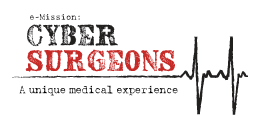Colorado Science Standards
Organize observations
Students will be able to:
• Use observations as data
• Record observations
• Make a record of observations through drawings, photographs, marks, diagrams, graphs, etc.
• Make a record of observations over time
• Organize observations to make a prediction
• Attend to a task in order to make an observation
• Communicate observations
• Make predictions related to observations, experiences and patterns
Life Science
Students will be able to:
• Describe the human life cycle, including the concept of aging, sickness, health, change
• Identify the observable parts of the body (e.g. eyes, mouth, legs)
• Describe the functions of observable parts of the parts of the body (e.g. see, breath in air, eat)
• Identify the main, internal parts of the body (e.g. lungs, hearts, bones)
• Describe functions of internal parts of the body (e.g. provide oxygen, pump blood)
• Recognize that certain parts of the body make up a subsystem (e.g. blood, veins, arteries, heart make up the circulatory system)
• Describe the functions of subsystems (digestive, respiration) and how they interrelate
• Understand how environmental conditions and personal decisions can affect parts of the body (e.g. allergies, smoking, food quality)
• Identify when a system is not functioning properly (e.g. when an individual cannot see or hear)
• Explain how large molecules (for example starch, protein) are broken down into smaller molecules, serving as an energy source or as basic building blocks in organisms)
• Explain how energy is used in the maintenance, repair, growth, and development of tissues (for example, in the production of new skin cells) differentiate among levels of organization (cells, tissues, and organs) and their roles within the whole organism
• Explain human body functions in terms of interacting organ systems composed of specialized structures that maintain or restore health (for example, mechanisms involved in homeostasis, such as feedback in the endocrine system)
• Compare and contrast characteristics of and treatments for various types of medical problems
• Use examples to explain the relationship of structure and function in organisms
• Understand there is a purpose of synthesis and breakdown of macromolecules in an organism (for example, carbohydrates lipids, amino acids serve as building blocks of proteins)
• Energy is used in the maintenance, repair, growth, and production of tissues
• The human body functions in terms of interacting organ systems composed of specialized structures that maintain or restore health
Science, technology and human activity and how they can affect the world.
Students will be able to:
• Identify careers related to the science /technology fields
• Describe how different careers affect the world through science and technology (e.g. doctor takes care of body, mechanics fixes cars, meteorologists helps people to prepare for the weather)
• Identify what is science and what is not (opinion vs. evidence)
• Describe how the structure of an object is related to its use or function (e.g. fingers can pick up
• Recognize that the human body is made up of different systems that work together (e.g. digestive, circulatory, respiratory, nervous)





